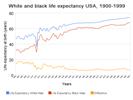A follow up to my post on Why life is 255 times better now than in 1800.
By 1900 the U.S. had recently become the wealthiest economy in the world, slightly surpassing Australia and Great Britain, and it had become twice as wealthy as France and Germany and four times as wealthy as Japan and Mexico, which were then roughly equal.
Percentage of American homes that had electricity: 3
Percentage that had running water: approximately 33
Percentage that had flush toilets: 15
Percentage of infants who died in before age one: 14 (today the percentage is less than 1)
Percentage of students who completed high school: 7
Percentage of men over 65 working full time: over 67 (and the average work week was over 60 hours and 6 days)
But to get to the serious math: 
Wealth: Per capita income in 1900 was around $5000, while now it is over five times that amount.
Population: The total U.S. population in 1900 was 76 million people, about one quarter of the current population of of a little over 300 million.
Life expectancy: In 1900 it was 47.3. Currently it is 78.1 or so. So if one is an adult by, say, age 16, the average amount of adult life rose from 31 years in 1820 to 62 years now — a factor of 2.
So people now have 5 times more income; they have 2 times as much time to enjoy it; and there are 4 times as many people.
5 x 2 x 4 = 40.

Where did you get your blog layout from? I’d like to get one like it for my blog.
Some would argue you should be dividing by 4 rather than multiplying regarding the number of people. Congestion, Pollution, Environmental Destruction, etc. This would make life only 2.5 times as good.
Unfortunately, many people in present society would seem to fail to realize all the advantages you mention that make life 5x better. Instead, everything is porous to them and there must always be something more. Though, maybe that is just a part of the massive population differences compared to life from a century ago. Perhaps there were people that complained about many aspects of life around the time of 1900 as well, but just not in such an outspoken way because there were fewer of them.
I don’t understand the calculation for life expectancy. First, what is 1820 doing in there? Secondly, although the mean life expectancy may have been 47 in 1900, the median age of death in 1900 was 57, meaning half lived longer than that. And 1/4 died before adulthood. So I would guess that the median age of death for those who reached adulthood must have been well up into the 60s.
I admire the attempt to be optimistic, but can anyone knowledgeable about history rightly claim that, on average, people alive today are 40 times more ethical, or wiser, or in any other way spiritually better off? Doubtful.
On one side of the ledger: less racial prejudice and more tolerance perhaps of superficial individual differences like clothing style. On the other side: everything else.
Counting life expectancy AND population means life expectance is double counted. Either there are 4 times as many person-years/year, or there are twice as many people (mesured in new people born/year) who live twice as long.
Think about it, if everyone over 47 died, there would be 150 million americans with a life expectancy of 31 adult years. In other words, people over 47 had their double life expectancy counted 31 years ago, so they are double counted if you include their double life expectancy again this year. they lived twice as long, but they still only lived once. likewise under 31’s will have their double life expectancy counted this year and again in 31 years time, though they will only have lived once.
so, 20 times as good as 1900. Still impressive though.
What a tic… How is more population better? More population is worse dude! Ask our depleted natural resources for a second opinion…
Can you name any resources that are depleted? And show the data?
I bet that when you look, you’ll note increasing plenty.